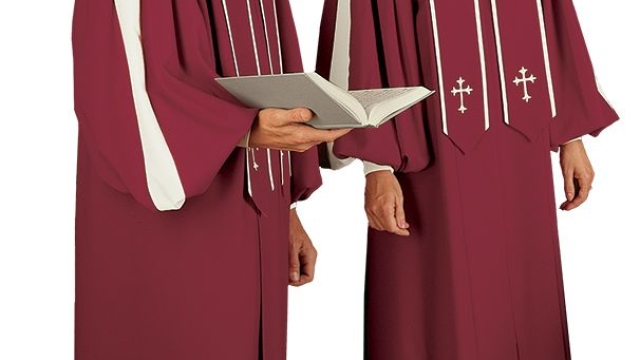
High school graduation is an incredibly momentous occasion in every student’s life. It symbolizes the culmination of years of hard work, growth, and accomplishment. One of the most recognizable symbols of this milestone is the high school cap and gown. For decades, students have donned these traditional graduation attire to mark the transition from student to graduate. However, in recent years, there has been a notable shift in the way high school graduation ceremonies are approached, with an evolving fashion landscape that challenges the traditional cap and gown.
In the past, high school cap and gown packages were often chosen based on uniformity and tradition. Schools would typically offer a limited selection of colors and styles, allowing little room for personal expression. The focus was on collective unity rather than individuality, as students proudly wore their standardized attire to receive their diplomas.
The History of High School Cap and Gown
High school cap and gown has a rich history that dates back several centuries. It symbolizes a significant milestone in the lives of high school students – their graduation. The tradition of wearing these distinctive garments has evolved over time, reflecting changes in society and fashion trends.
In its early beginnings, high school graduates did not wear specific attire for their graduation ceremonies. In fact, the concept of a cap and gown originated from the academic regalia worn by university students and scholars during medieval times. The practice of graduates wearing caps, known as mortarboards, and gowns gradually made its way into high school graduation ceremonies.
During the late 19th and early 20th centuries, as high schools gained prominence and expanded their academic programs, the adoption of cap and gown became more prevalent. The cap symbolized the pursuit of knowledge and the transition into higher education or professional life, while the gown represented academic achievement and dignity.
Over the years, high school cap and gown packages have become more standardized and widely available. Companies specializing in graduation attire emerged, offering a range of designs, colors, and accessories to accommodate the diverse needs of graduating students. These packages typically include the cap, gown, tassel, and sometimes additional items such as stoles or honor cords.
High school graduation caps and gowns have also seen shifts in fashion and style. Originally, gowns were simply robes without any specific adornments. However, as fashion trends evolved, gowns started featuring various embellishments, such as trimmed collars, decorative buttons or zippers, and different sleeve styles. Similarly, caps underwent changes, with modern designs incorporating adjustable tassels and improved fitting mechanisms.
In conclusion, the history of high school cap and gown is intertwined with the evolution of education, societal norms, and fashion. From its origins in medieval academia to its widespread use in high school graduations today, this attire carries a symbolic significance, representing the achievements and aspirations of graduating students.
Contemporary Trends in High School Graduation Attire
In recent years, the world of high school graduation attire has undergone significant changes, reflecting the evolving fashion sensibilities of the younger generation. The traditional cap and gown, once synonymous with graduation ceremonies, has now paved the way for a variety of contemporary trends that allow students to express their individuality and personal style on this momentous occasion.
One prominent trend that has gained popularity is the customization of high school cap and gown packages. Gone are the days of a one-size-fits-all approach; today’s graduates have the option to personalize their graduation attire to better reflect their personality. From choosing alternative colors for the gown to adding unique embellishments or embroidery, students now have the opportunity to make a fashion statement while still adhering to the formality of the event.
High school graduation caps and gowns have also seen a shift in design, with modern modifications giving them a fresh and contemporary look. Some schools have introduced sleeker gown styles with slimmer cuts and tailored fits, departing from the traditional loose and flowing robes. Additionally, graduation caps are no longer restricted to the classic mortarboard style. Graduates now have the freedom to select from a range of stylish cap designs, including ones with intricate patterns, metallic finishes, or even adorned with inspirational quotes.
Another emerging trend in high school graduation attire is the integration of sustainable and eco-friendly materials. With an increased focus on environmental consciousness, many schools are opting for gowns and caps made from recycled or organic fibers. This not only aligns with the values of the younger generation but also highlights the importance of sustainability and responsible consumption in today’s world.
As we observe the evolution of high school graduation attire, it is clear that the days of uniformity are gradually fading away. Students now have more opportunities than ever to showcase their personal style and leave a lasting impression on their graduation day. From customized packages to modern designs and sustainable materials, the fashion evolution of high school cap and gown is undoubtedly an exciting reflection of the changing times.
The Implications of Graduation Attire on Student Identity
When it comes to high school graduation, the cap and gown have always been seen as a symbol of achievement and transition. These iconic garments hold great significance, not only for the students wearing them but also for their families and communities. They mark the culmination of years of hard work and dedication, and represent the next stage in the journey of life. However, the impact of graduation attire on student identity goes beyond mere symbolism.
High school cap and gown packages are carefully designed to create a sense of unity and equality among graduating students. By dressing everyone in the same attire, regardless of their individual backgrounds, achievements, or personal style, the focus is shifted from differences to common goals. This can foster a sense of belonging and shared purpose, creating a stronger sense of community among graduates. In this way, graduation attire becomes a unifying force that transcends socioeconomic and cultural barriers.
judge robes
Wearing a graduation cap and gown can also have a profound psychological effect on students. The act of putting on this special attire can boost their self-esteem and instill a sense of pride in their accomplishments. It serves as a visual reminder of their hard work and the milestones they have achieved throughout high school. The cap and gown become a tangible representation of their academic journey, making the moment of graduation even more meaningful and memorable.
Additionally, graduation attire plays a role in shaping the perception of high school graduates by the broader society. The traditional cap and gown signify a rite of passage, signifying the transition from adolescence to adulthood. As graduates don these attire, they are seen as individuals ready to take on new challenges and responsibilities. The cap and gown become a visual cue that commands respect and recognition, both within the school community and beyond.
In conclusion, the implications of graduation attire on student identity are far-reaching. Beyond their symbolic nature, high school cap and gown packages foster unity, boost self-esteem, and shape the perception of graduates. These garments have become an integral part of the graduation experience, representing the collective achievements and aspirations of an entire graduating class.


